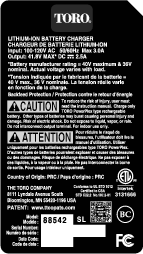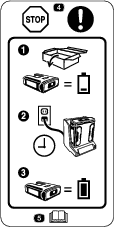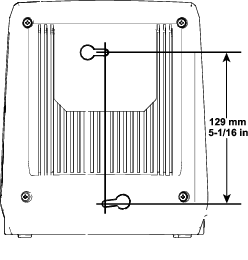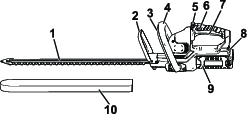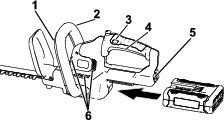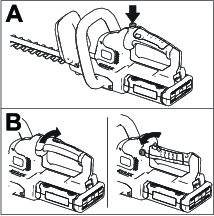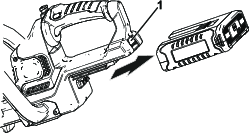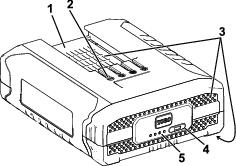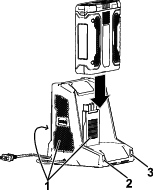Maintenance
Disconnect the product from the power supply (i.e., remove the plug from the power supply or the battery pack) before maintenance or cleaning work.
Use only the manufacturer’s recommended replacement parts and accessories.
Inspect and maintain the product regularly. Have the product repaired only by an Authorized Service Dealer.
Oiling the Trimmer Blade
Note: Oil the trimmer blade before and after each use.
-
Stop the motor and remove the battery.
-
Clean dirt and debris from the body of the hedge trimmer, using a damp cloth with a mild detergent.
Note: Do not use any strong detergents on the plastic housing or the handle. They can be damaged by certain aromatic oils, such as pine and lemon, and by solvents such as kerosene.
-
Lay the hedge trimmer on a flat surface. Apply light-weight machine oil along the edge of the top blade. If you will be using the hedge trimmer for an extended period of time, oil the blade during use.
Note: Do not oil the hedge trimmer while it is running.
Storage
Important: Store the tool, battery pack, and charger only in temperatures that are within the appropriate range; refer to Specifications.
Important: If you are storing the tool for a year or longer, remove the battery pack from the tool and charge the battery pack until 2 or 3 LED indicators turn blue on the battery. Do not store a fully charged or fully depleted battery. When you are ready to use the tool again, charge the battery pack until the left indicator light turns green on the charger or all 4 LED indicators turn blue on the battery.
-
Disconnect the product from the power supply (i.e., remove the plug from the power supply or the battery pack) and check for damage after use.
-
Clean all foreign material from the product.
-
When not in use, store the tool, battery pack, and battery charger out of the reach of children.
-
Keep the tool, battery pack, and battery charger away from corrosive agents, such as garden chemicals and de-icing salts.
-
To reduce the risk of serious personal injury, do not store the battery pack outside or in vehicles.
-
Store the tool, battery pack, and battery charger in an enclosed clean, dry area.
Preparing the Battery Pack for Recycling
Important: Upon removal, cover the terminals of the battery pack with heavy-duty adhesive tape. Do not attempt to destroy or disassemble the battery pack or remove any of its components. Recycle or properly dispose of lithium-ion battery packs at a battery recycling facility.
 |
For more information on recycling lithium-ion battery packs and to locate the battery recycling facility closest to you, visit www.Call2Recycle.org (US and Canada only). If you are located outside of the US and Canada, please contact your authorized Toro distributor. |














